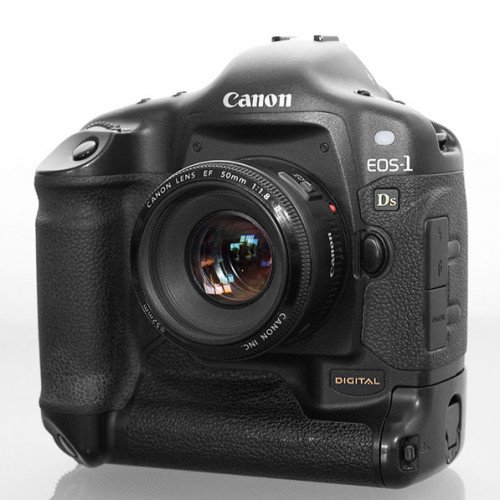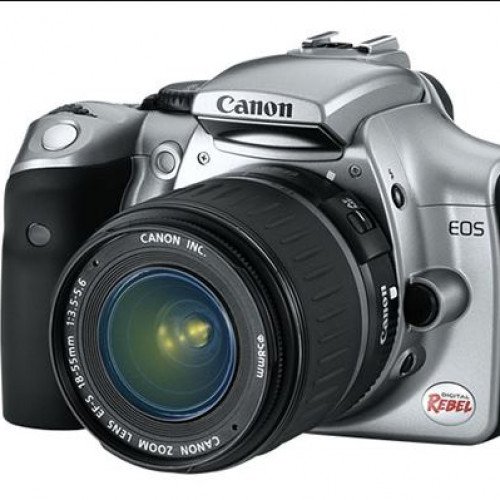Canon EOS-1Ds, 2002 vs Canon EOS Digital Rebel, 2003

Canon EOS-1Ds, 2002
Canon’s first full-frame DSLR was a high-end pro model featuring a then state-of-the-art 11.1MP CMOS sensor, a glass pentaprism viewfinder, a 2-inch 120k-dot LCD, an electronically controlled focal-plane shutter with speeds to 1/8000 sec, a 45-point AF system, and a 21-zone autoexposure (AE) system. The ability to use 35mm lenses at their designed focal length was a huge advantage for photograhers then transitioning to digital, and at its inception the 1Ds was capable of shooting at a wider angle than any of its competitors. With its superb molded magnesium alloy body, comprehensive weather sealing at every compartment door, terminal, connector, and button, 3 fps full-res burst rate, and outstanding imaging performance, the 1Ds helped to cement Canon’s fine reputation among pros in the digital era.
Statistics for this Xoptio

Canon EOS Digital Rebel, 2003
The first DSLR with a retail price under $1000, complete with 18-55mm f/3.5-5.6 Canon EF-S lens (equivalent to a 29-88 mm lens in 35mm format), the Digital Rebel was the opening salvo in a trend that revolutionized the photo industry by moving the DSLR squarely into the mass market arena. Attractively finished in silver and styled along the sleek lines of the highly successful 35mm EOS Rebels, it incorporates a 6MP CMOS image sensor, and features an illuminated LCD control panel, 1.8-inch TFT color LCD, and two separate arrays of pushbutton playback and operating controls on the back. Other features: partial or centerweighted average metering, shutter speeds from 30-1/4000 sec, 7-zone AF system, and burst capacity up to four images at 2.5 fps. Though the Digial Rebel lacks the overwhelming solidity and sophistication of pro-level DSLRs, it it truly a camera that redefined the DSLR breed and pointed the way to new directions in digital photography.